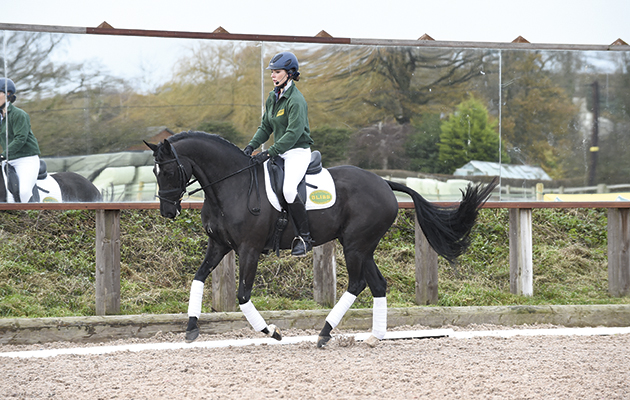The chances are that you won’t hear much about the trapezius muscle, unless problems within this important area start to affect your horse’s way of going.
This large, thin, two-part sheet of superficial muscle is one of a group of muscles that connect the forelimbs to the rest of the horse’s body. Its main function is to help raise the neck when the forelimbs are bearing weight, and to move, stabilise and elevate the top of the scapula (shoulder blade) during the horse’s movement.
The larger, cervical part of the trapezius muscle originates along the nuchal ligament and attaches to the full length of the scapula — moving the scapula up and forward.
The smaller, thoracic part originates at the supraspinous ligament at the level of the fourth to 10th thoracic vertebrae and attaches to the top third of the scapula — enabling it to move up and back.
Chain gang
Although muscles are often considered individually, in reality they work with each other in groups and chains.
The trapezius muscle is involved in creating movement of the forelimb — both the extension, or “reach” phase, when the limb swings forward, and its retraction when it returns to the body.
The thoracic portion of the trapezius muscle is part of the forelimb extension chain, which can be traced from the fore toe through to the poll. This muscle portion is important for stabilising the top of the scapula, which enables the rest of the chain to bring the leg forward during the swing phase. Weakness in the thoracic trapezius causes scapula instability and, consequently, a loss of forelimb expression and reach.

The cervical portion of the trapezius muscle is part of the forelimb retraction chain, which works in opposition to the extension chain and can be traced from the fore heel through to the lumbosacral region of the back. Again, the muscle stabilises the top of the scapula, enabling the rest of the chain to retract the forelimb and pull the heavy weight of the horse’s body over the planted foreleg. Strength within this chain is important for forelimb power and cadence.
Raised pole work in both walk and trot is an effective way of increasing the strength of the trapezius, because greater scapula stability is required as the limbs are lifted higher over the poles.
The trapezius, in conjunction with the rhomboid muscle, has another important role to play in lateral movements such as leg yield, shoulder-in and half-pass.
It lifts and stabilises the scapula and withers during abduction (the action of moving the limb away from the body), and is then stretched during adduction (bringing the limb towards and across the body).
All lateral exercises are useful for engaging, strengthening and conditioning the trapezius muscle. Shoulder-in is particularly useful for a jumper as this will improve his ability to lift his scapulas, thus enhancing forelimb technique.
Spotting problems
Tension, spasm, underdevelopment or tears within the trapezius muscle may cause a reduction in stride length, scapula control and forelimb asymmetry, and perhaps even lameness.
If there is an alteration in the position of the scapula on the affected side, postural change may then follow.
Asymmetry of the trapezius muscle is best observed from above and behind. A reduction in scapula control may be noticeable in lateral work and when jumping, while in more extreme cases there may be a loss of forelimb expression in trot.
Any pinching of the trapezius muscle by a saddle that is too narrow can cause a dramatic reduction in stride length. This may be particularly noticeable when the horse is going downhill.
The hollow sometimes seen in the region of the thoracic trapezius muscle behind the scapula is often attributed to atrophy of the trapezius muscle. However, as the thoracic muscle itself is so thin, this alone is rarely the cause. Atrophy of other muscles in the area and an alteration of the position or shape of the thorax (the chest area) relative to the forelimbs is a more likely cause.
Ref: Horse & Hound; 28 April 2016
